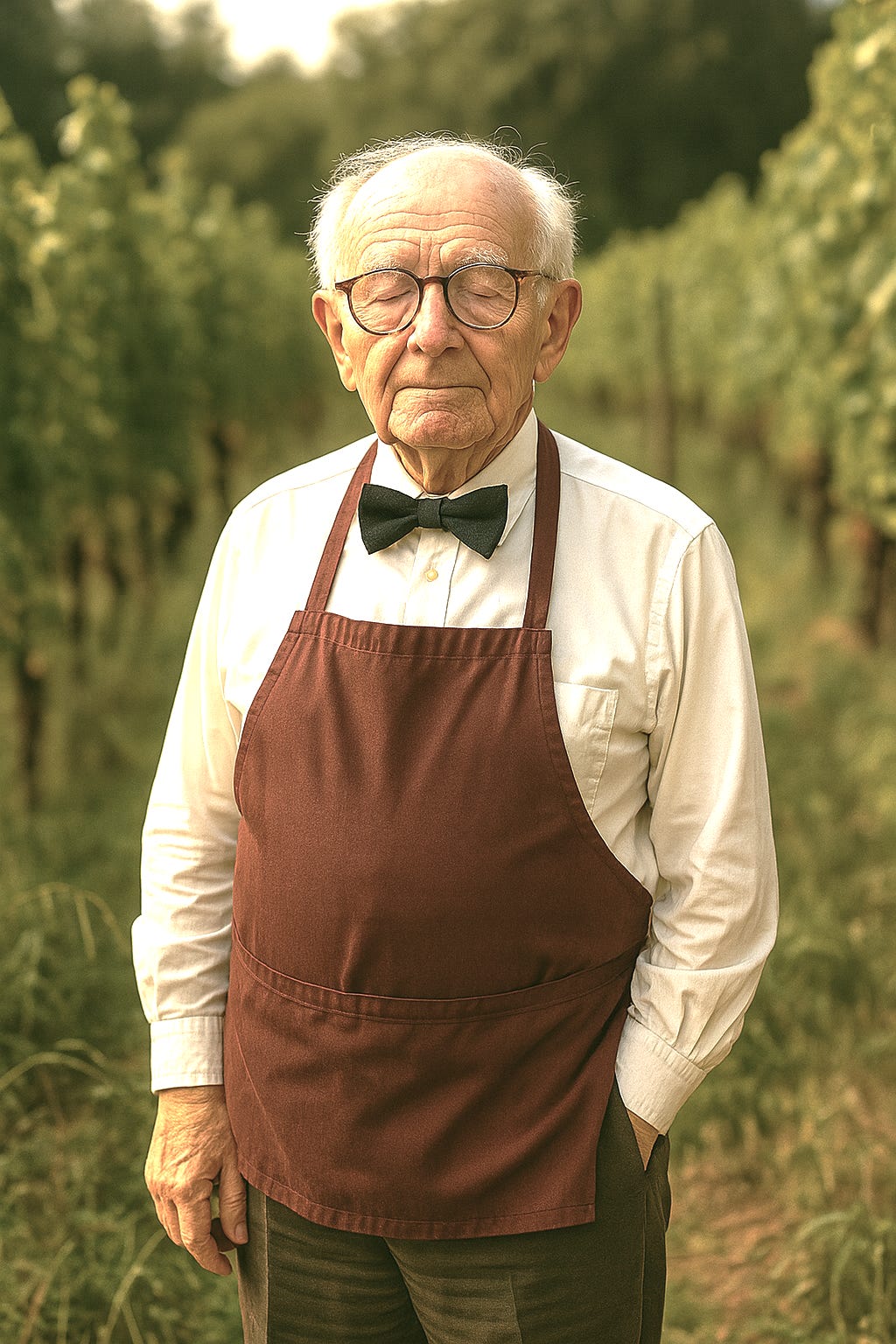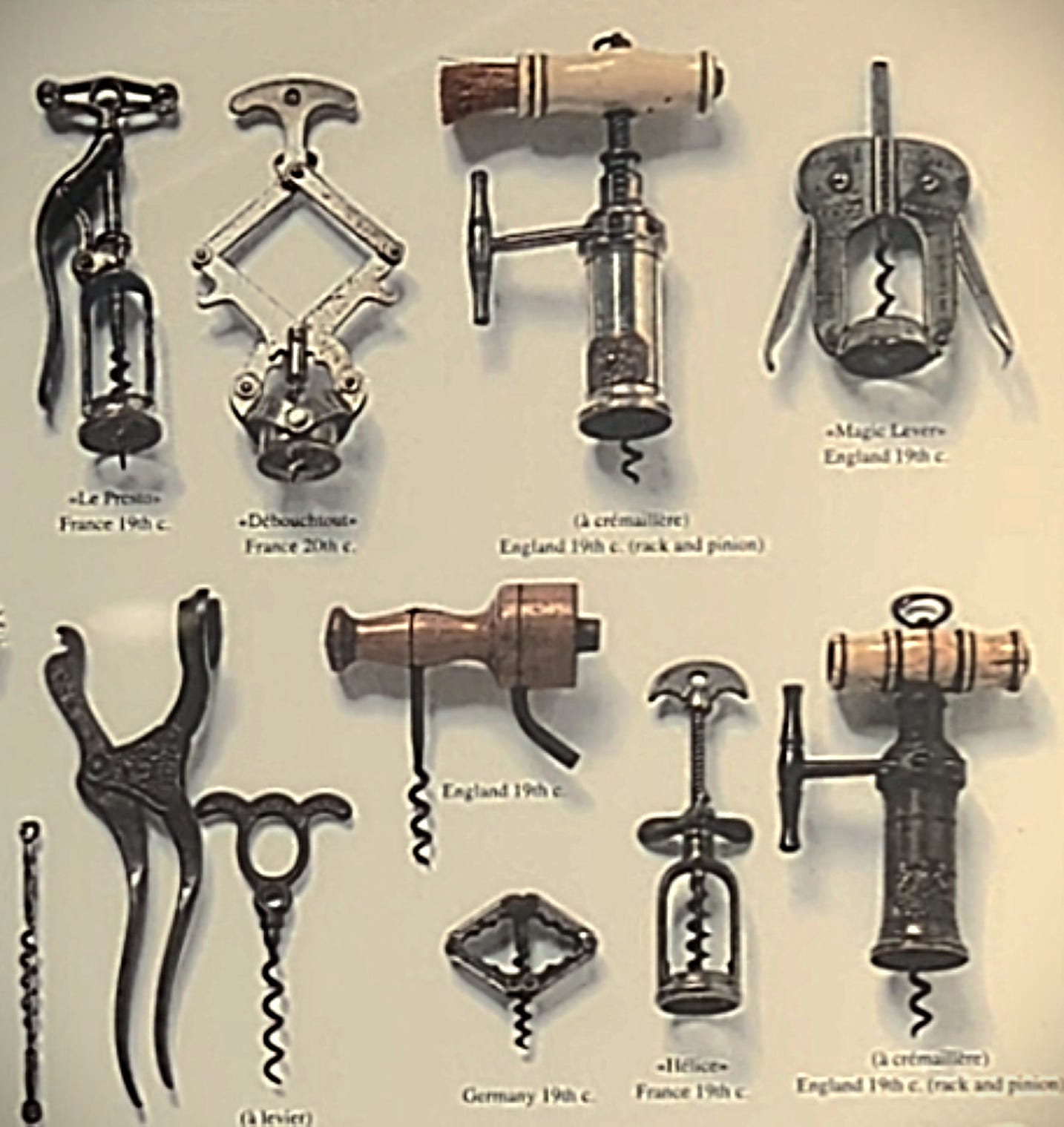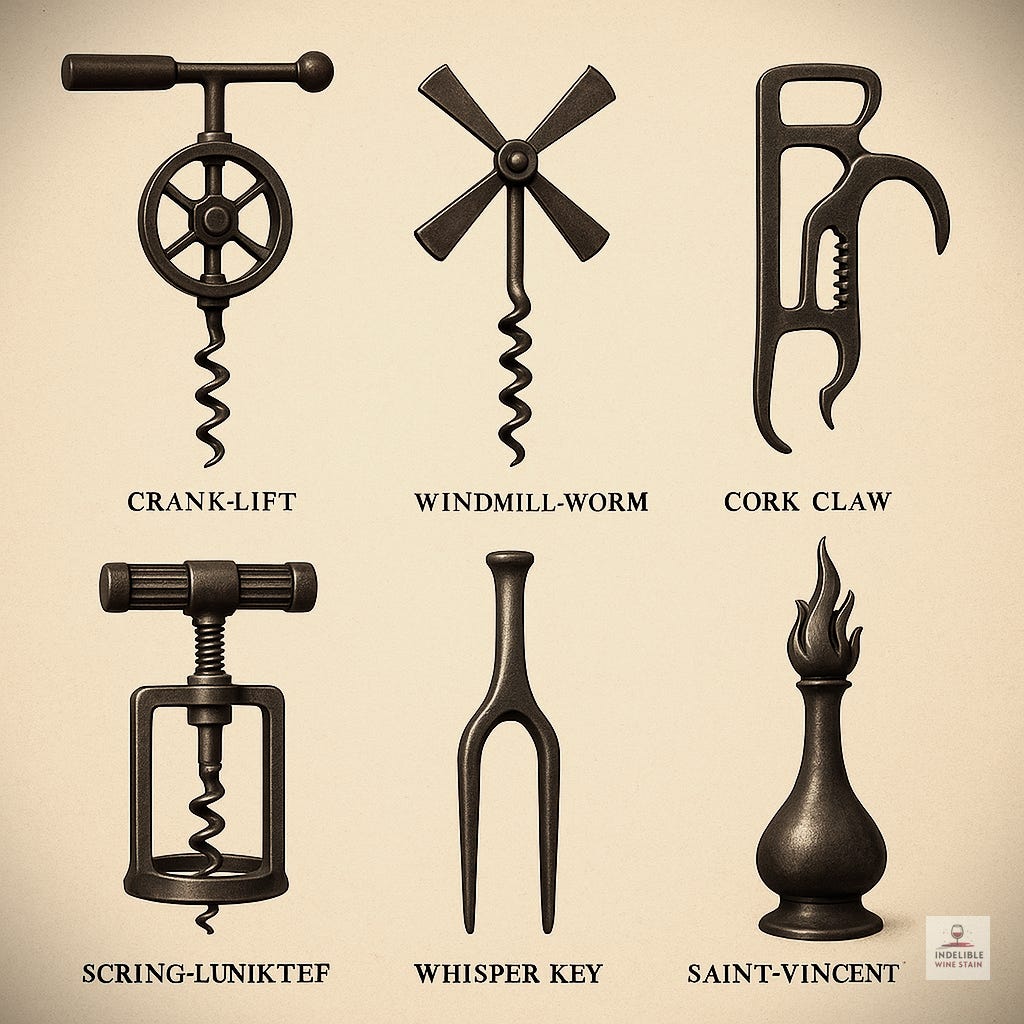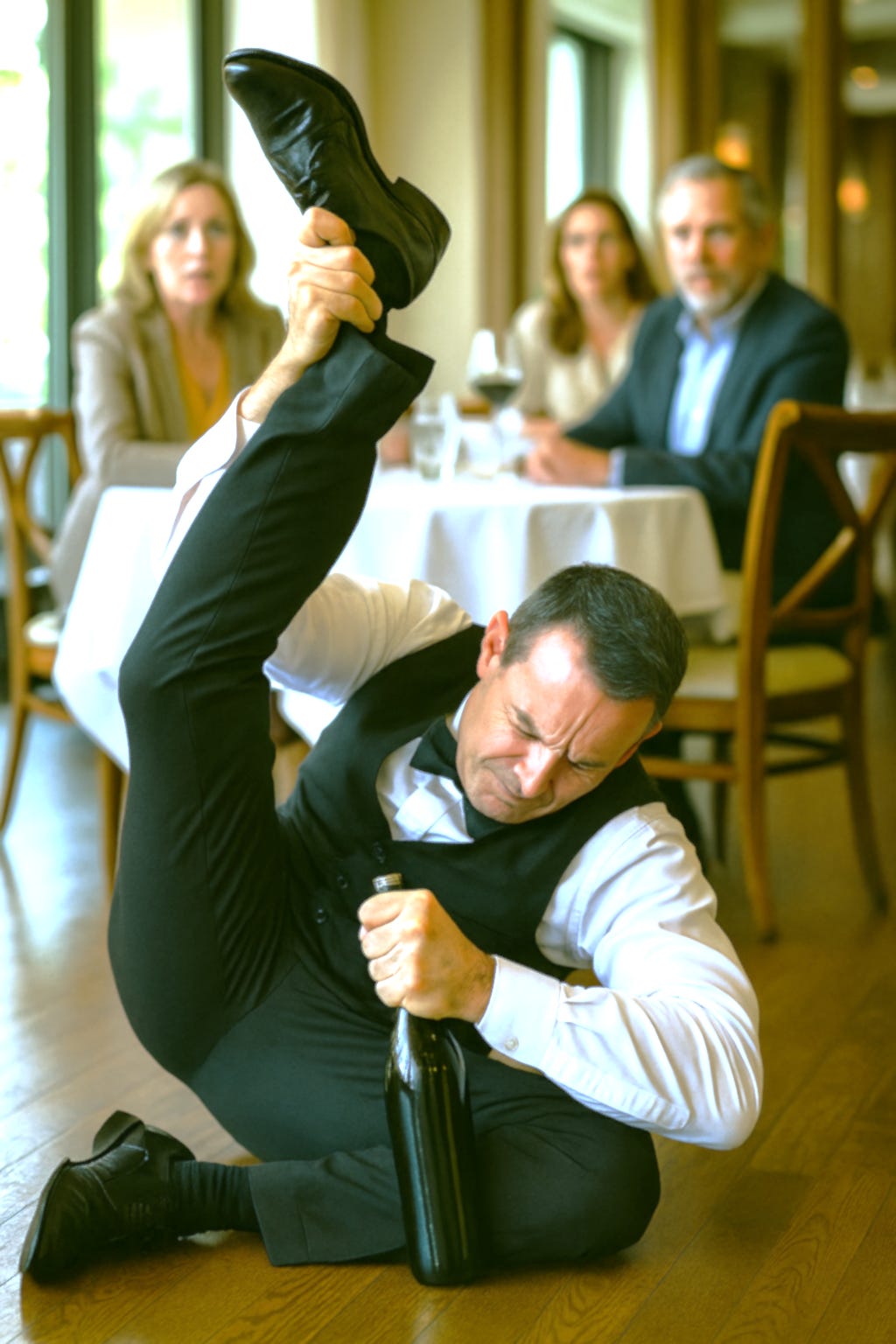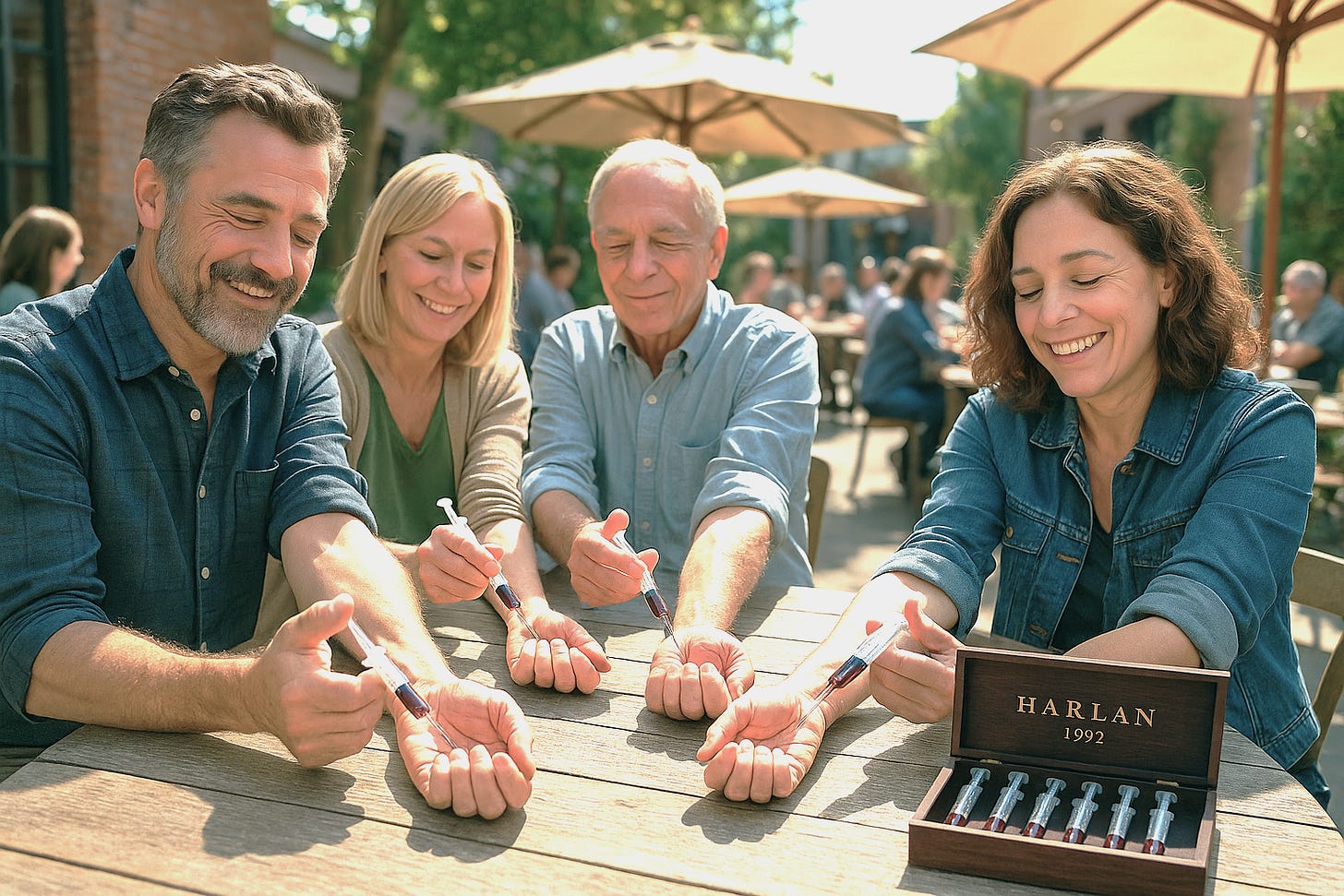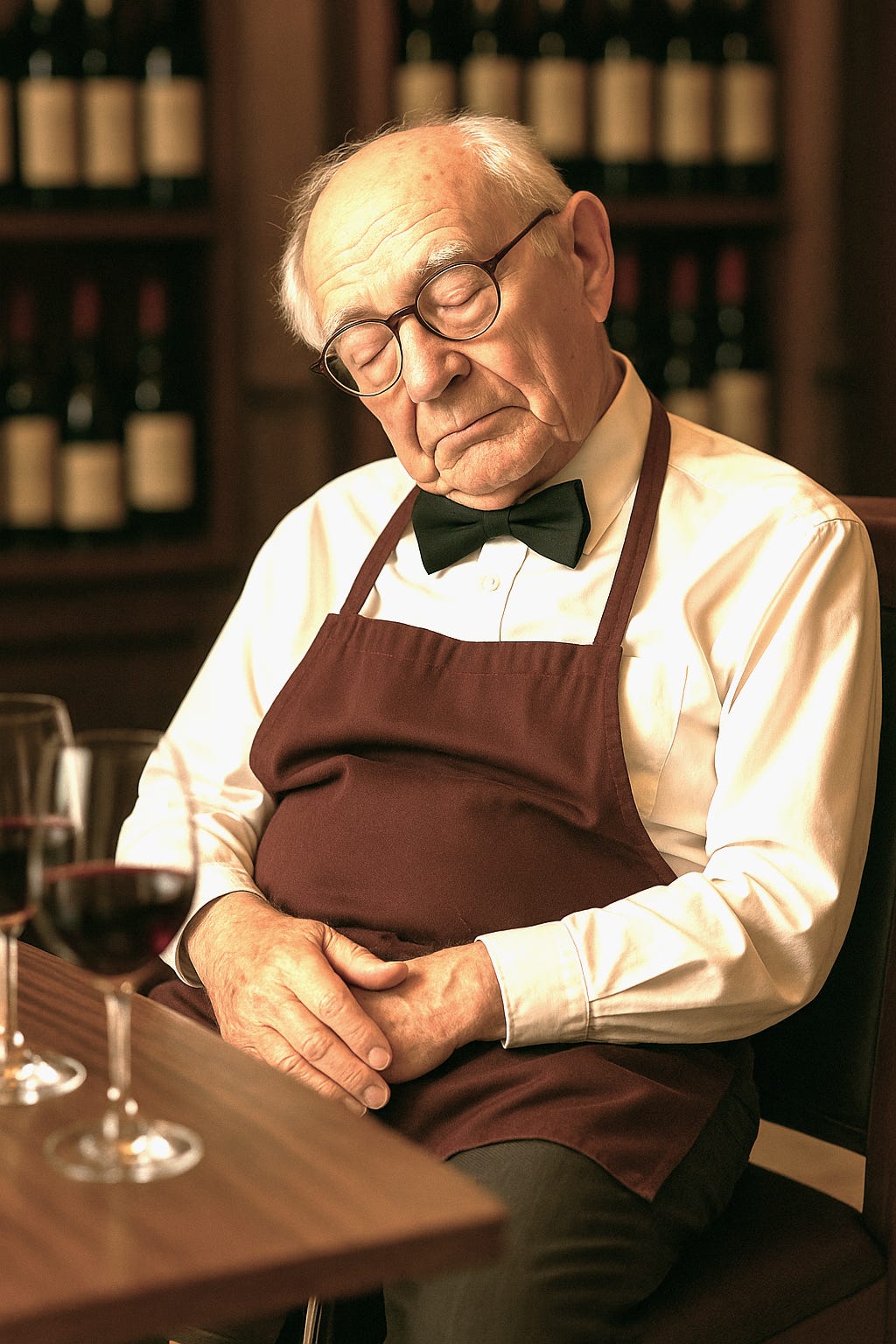Hello, Wine Stainers! It is I - Albert Waffling, the oldest Sommelier in the world. By Charlemagne’s beard, I’m 94 and still on the floor!
I remember…and I may be one of the only ones left who does, the seductive sound of a crusty cork being pulled by candlelight in the cellars of Chambolle during the blackout of 1947.
It was a kind of “hush-pop,” a “sha-clom,” like the liquid made a sigh that had been waiting forty years to exhale. No screech, no gasp, no fizz - just release.
I remember that it was a dignified affair back then and even if the floor was damp, the sommelier had a good stance, opened the bottle by putting it between his boot heels and pulled upwards, even if he had only one good thumb to grip with. Remember, thumbs separate us from rest of the animals.
These days, everyone’s in a hurry. Hurry to go where?
Don’t let us hurry to Heaven, there’s plenty to be done here.
These modern heathen “Somms” - they twist, they hiss, they grunt by the table like a caveman and sneer as they saber bottles with salad tongs.
I once saw a young man open a Cremant de Bordeaux with an umbrella.
So yes, I am writing now for the “Indelible Wine Stain” and it is time. Time for a proper guide. Not just how to open wine, but who, where and with what?
A guide to corkscrews, to tongs and tricks, to spoons and shoes and things that shouldn’t work but sometimes do. A guide for hands but also the heart.
Let us begin, if you don’t mind a little waffle from me Albert Waffling, the oldest Sommelier in the world…
Long before there were “Somms” - shortened from the word Sommelier, because it’s easy to pronounce - there were men and women with tools.
Some sharp, some entirely unnecessary but splendidly ceremonial.
You know, the “Corkscrew” emerged from the “musket worm,” an old military implement used to remove bullets from gun barrels. In 1795, Reverend Samuel Henshall patented the first modern corkscrew. I once owned a Henshall original. It unscrewed the truth from a bottle of Madeira with such grace.
Then came the “Waiter’s Friend,” patented in 1882 by Karl Wienke. It had a worm and a lever, quite the fancy-pants back then. If you had one of these in your apron, you had dignity. I named mine Claudette after a lady that I courted, called Claudette.
The “Ah-So” (or Butler’s Friend) arrived for those moments when the cork was too old to be pierced. Two blades, slipped beside the cork, and rocked back and forth, coaxing the cork upward with the delicacy of lifting a sleeping cat. Spies used them to sneak sips. Lovers used them to impress. Claudette became so jealous, I caught her with my best friend… it was my loss.
Some opened bottles with Port Tongs - iron clamps heated in flame, then wrapped around the bottle neck, followed by a splish of cold water. The neck snaps clean off you know, and the wine breathes for the first time since I was sober. I think that they were developed from a medieval torture device.
And of course, there is the art of Sabrage. That is to say, opening of a bottle of Champagne with a saber. Theatrical, dangerous and delightful. I’ve seen it done with ski poles, with spoons, with high heels and the base of a flute. Once, Musty Osmosis did it with his nose. We never speak of that evening.
There were other contraptions: the crank-lift, the windmill worm, the cork claw, the spring-loaded waiter-killer, the Whisper Key (said to open bottles through voice resonance), the Scring-Luniktef, Randolph’s Scissors and of course, who could forget the infamous Saint-Vincent Flame Spout, which required a candle, a chant and a priest with knowledge of the Secret Bacchusian Cults. Those were the days… so many options.
Now we live in an age of tools that open wine with such ease.
There is the “Durand,” named for my dear friend Yves Durand. He, a Master Sommelier (a Sommelier that is the Master of all other Sommelier), a television host (for those that remember tele-vision) and spiritual steward of aged corks. Invented by Mark Taylor, the Durand combines a worm with the blades of an Ah-So, allowing one to extract ancient corks without a single crumble. It is, I must admit, the finest modern opener.
Yves taught many. Aldo Sohm, Pascaline Lepeltier, even Larry Stone passed through his orbit. He once told me, “A cork remembers how you treat it.”
I told him the same was true of wild cats, like my friend Chairman Meow.
Then, there is the “Coravin,” which lets one pour wine without removing the cork, using a secret gas and a thin needle. It’s brilliant. The cork never knows.
And the screwcap?
Twist and go. No ceremony. Functional, but like taking communion from a Church vending machine.
We also now open wine with shoes. Yes. A bottle in the heel of a loafer, banged rhythmically against a wall until the cork budges. It works, sometimes. Though your wall may not forgive you and I avoid doing this table-side.
Always remember to take off your shoe first…a mistake I have learned from.
Talk of the future? Ah yes. The future.
Will we open wine with our minds? With thought-controlled devices? Will a neural implant deliver the memory of wine without the mess of drinking it?
Or maybe bottles will no longer exist. You’ll inject the serum into your arm and the memory will shimmer into your mind like a beautiful medicine.
All I ask is this dear stainers: please let the sound of a popping cork remain. Even if it’s simulated.
In every cork lies a story. In every opener, a philosophy. From tongs and swords to gas needles and telepathic hums, we have tried to tame the bottle.
But wine must always be freed. Carefully. Elegantly. Preferably with human hands rather than a robot from the future.
Choose your tools wisely. Honor your teachers. And if your cork breaks, don’t panic. Just ask yourself: what would good old Albert Waffling do?


